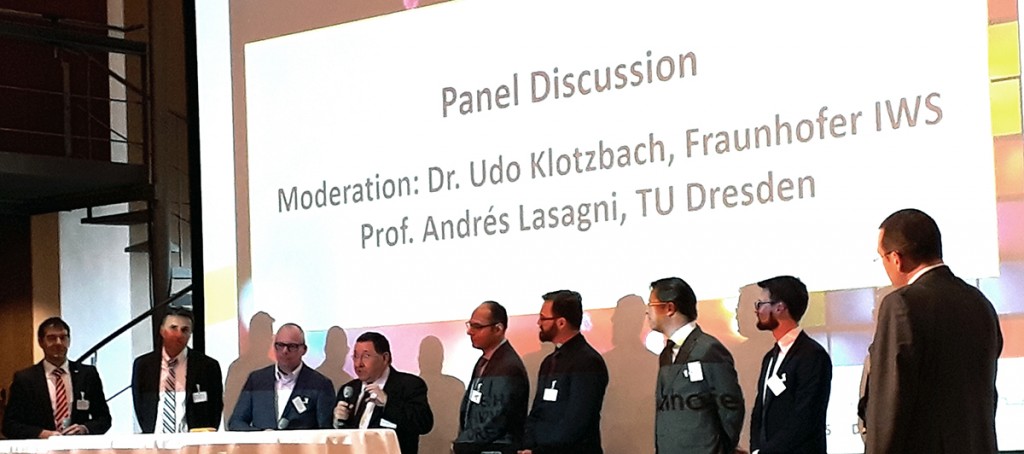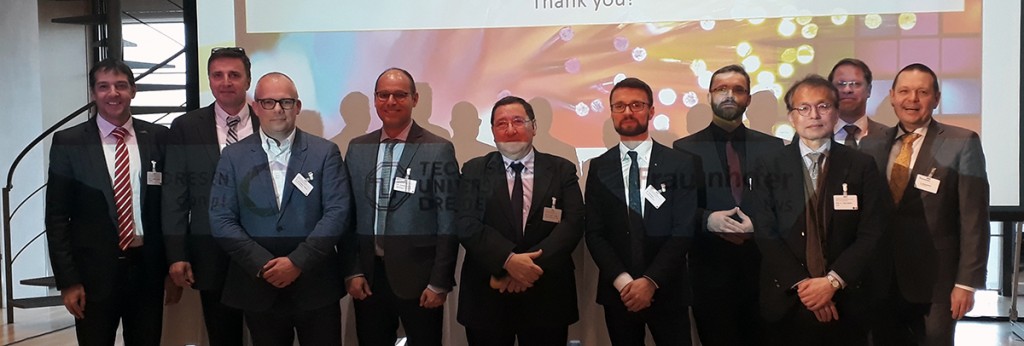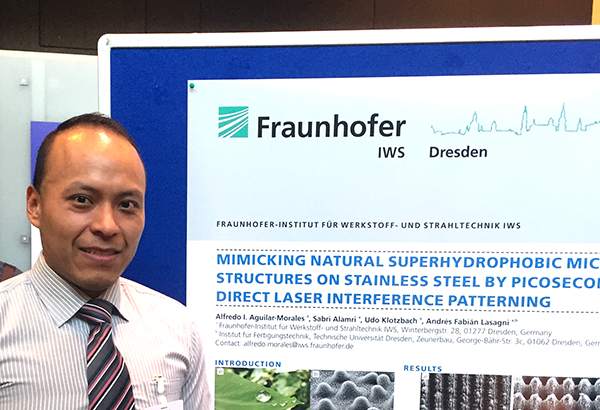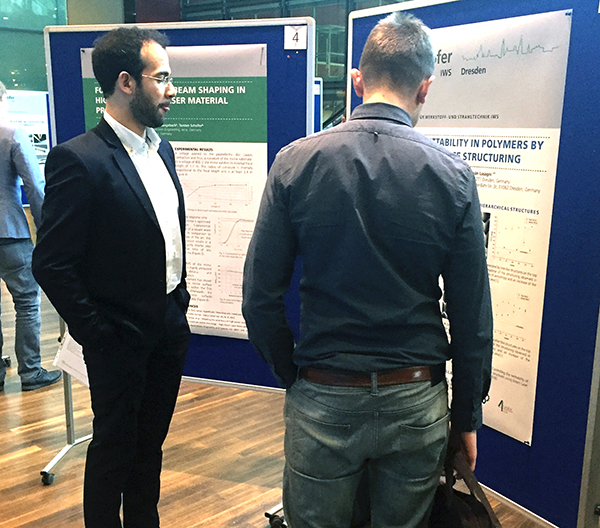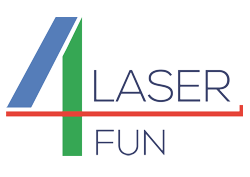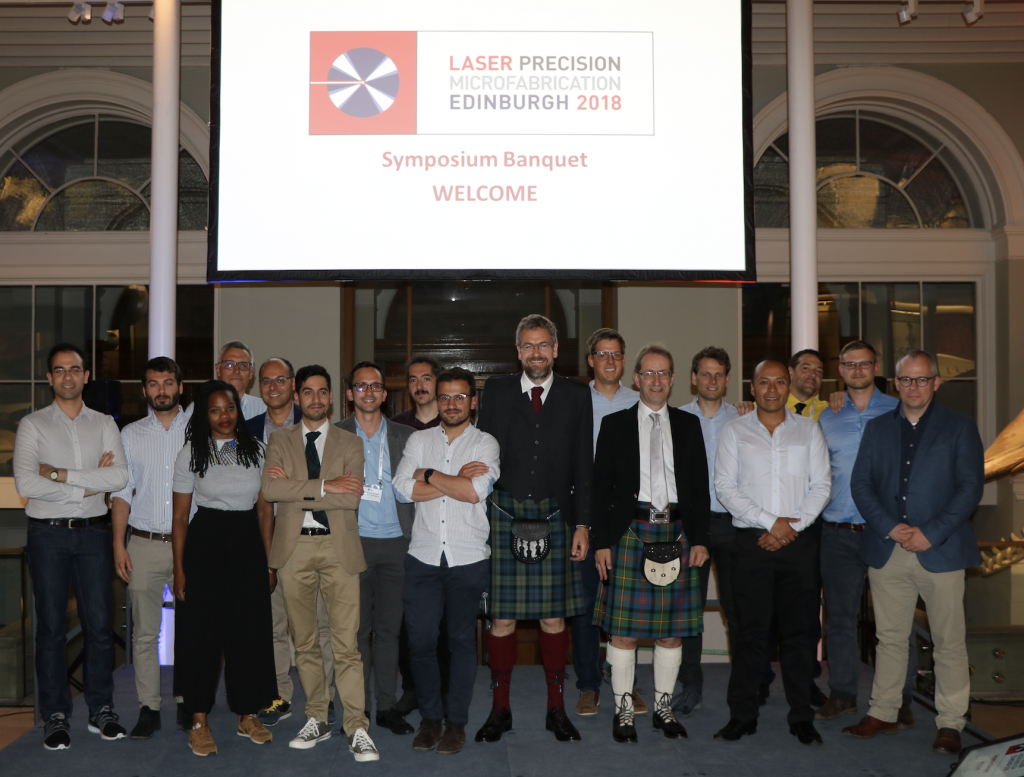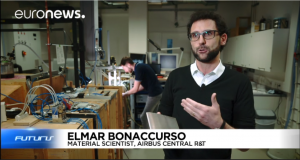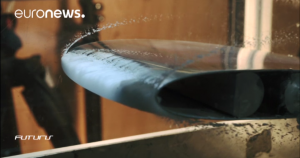From October 1st up to and including October 5th, the third Summer school for (and by) PhD students of the Laser4Fun project is organised and hosted by CNR IFN and Politecnio di Bari in Bari, Italy. The topic of the summer school is “Laser Micro/Nanostructuring and Surface Tribology”.
 About RomerGRBE
About RomerGRBE
No more cleaning: Lasers make the lotus effect on aircraft
Filigree engravings on external surfaces of aircraft are intended to ensure that airflow remains smooth and drag on the aircraft low. For this, engineers at the Fraunhofer Institute for Material and Beam Technology IWS, the Technische Universität Dresden and Airbus have developed a laser process that produces textured surfaces at high throughput making surface contamination more difficult.
More details can be found at:
Biomimetic Surface Structuring Using Laser Based Interferometric Methods
Results of the work in the Laser4Fun project has been published as:
Andrés Fabián Lasagni, Sabri Alamri, Alfredo Ismael Aguilar-Morales, Florian Rößler, Bogdan Voisiat and Tim Kunze. Biomimetic Surface Structuring Using Laser Based Interferometric Methods. Appl. Sci. 2018, 8(8), 1260
Abstract
This review investigates the capabilities of laser-based interferometric methods for producing structures with multiple-scaled surface features imitating natural examples. Firstly, laser interference lithography is used to produce hierarchical patterns with length-scales in the micrometer and sub-micrometer range. Different strategies are discussed to produce a wide variety of periodic arrays, depending on the number of resist lasers used as well as the way in which the exposure steps are organized. After that, periodic patterns are fabricated on polymers using ns laser pulses from an UV-laser system. Additionally in this case, multiple-scale patterns are produced by using different strategies. A similar approach is described to treat metallic surfaces of steel X6Cr17 and a titanium alloy Ti6Al4V. The geometry of the produced microstructures was characterized using scanning electron microscopy and confocal microscopy. Measurement of water contact angle is performed for both polymer and metallic surfaces..
Link(s)
Laser4Fun session at LPM2018 conference in Edinburgh, Scotland, UK
The 19th International Symposium on Laser Precision Microfabrication (LPM 2018, www.lpm2018.org) takes place on June 25-28, 2018 in Edinburgh, Scotland, UK. This symposium is the world’s number one meeting of the laser user community where the most advanced developments and recent trends in laser application for fine and precise fabrication of diverse materials are discussed between industry, research and academia.
Today, Tuesday June 26th, a whole session was dedicated to presentations by near all our ESRs, disseminating results from the Laser4Fun project.
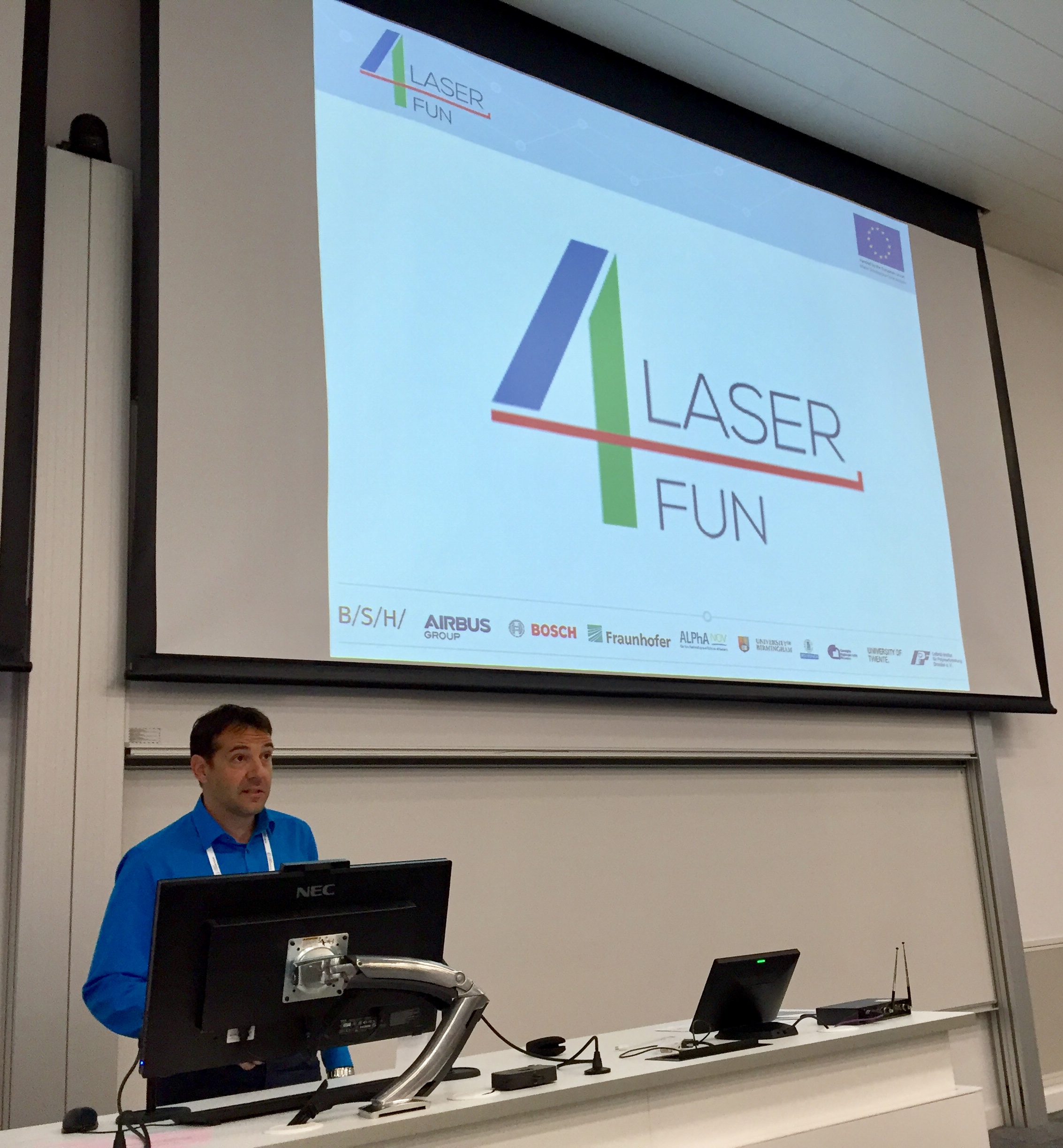
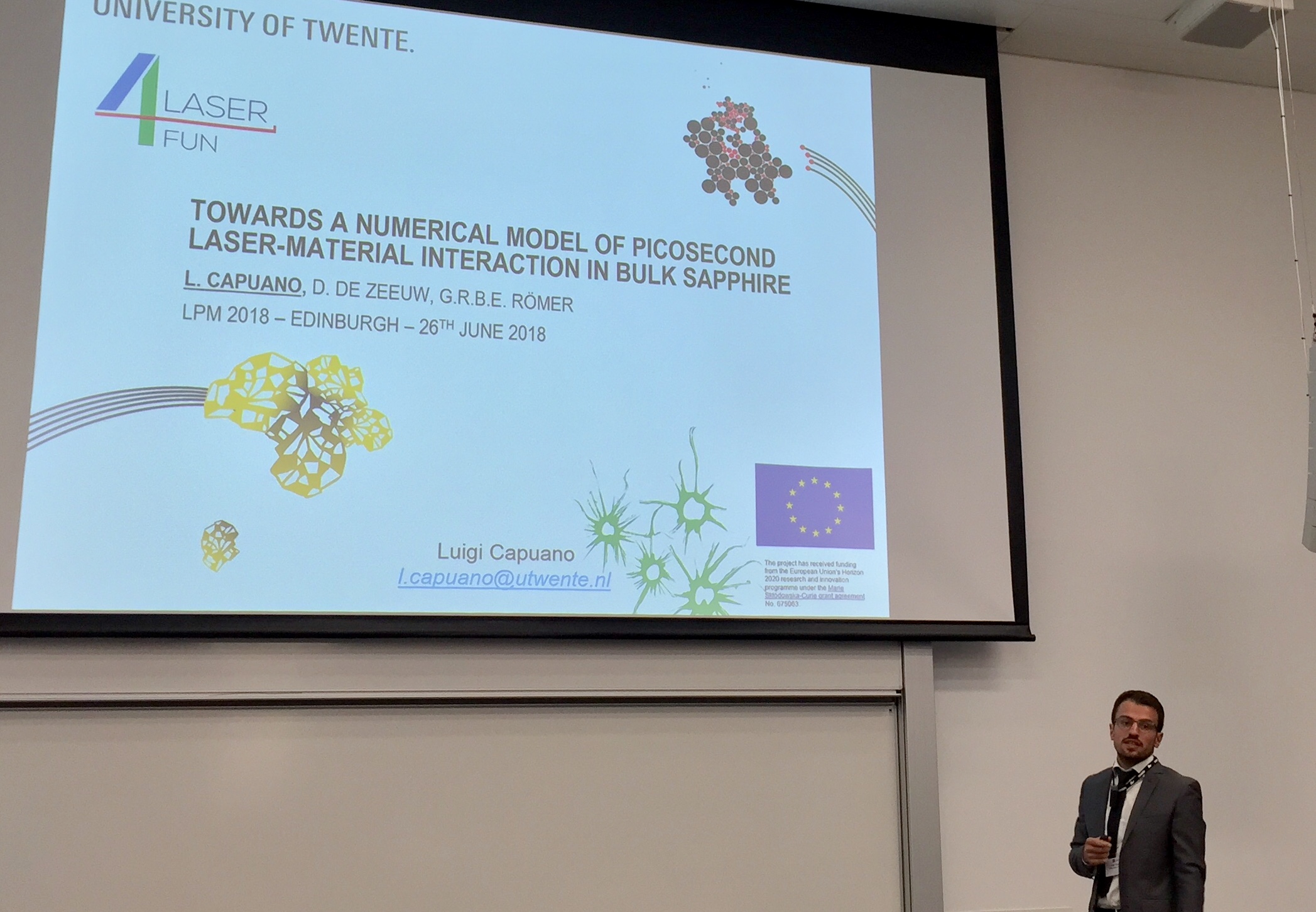
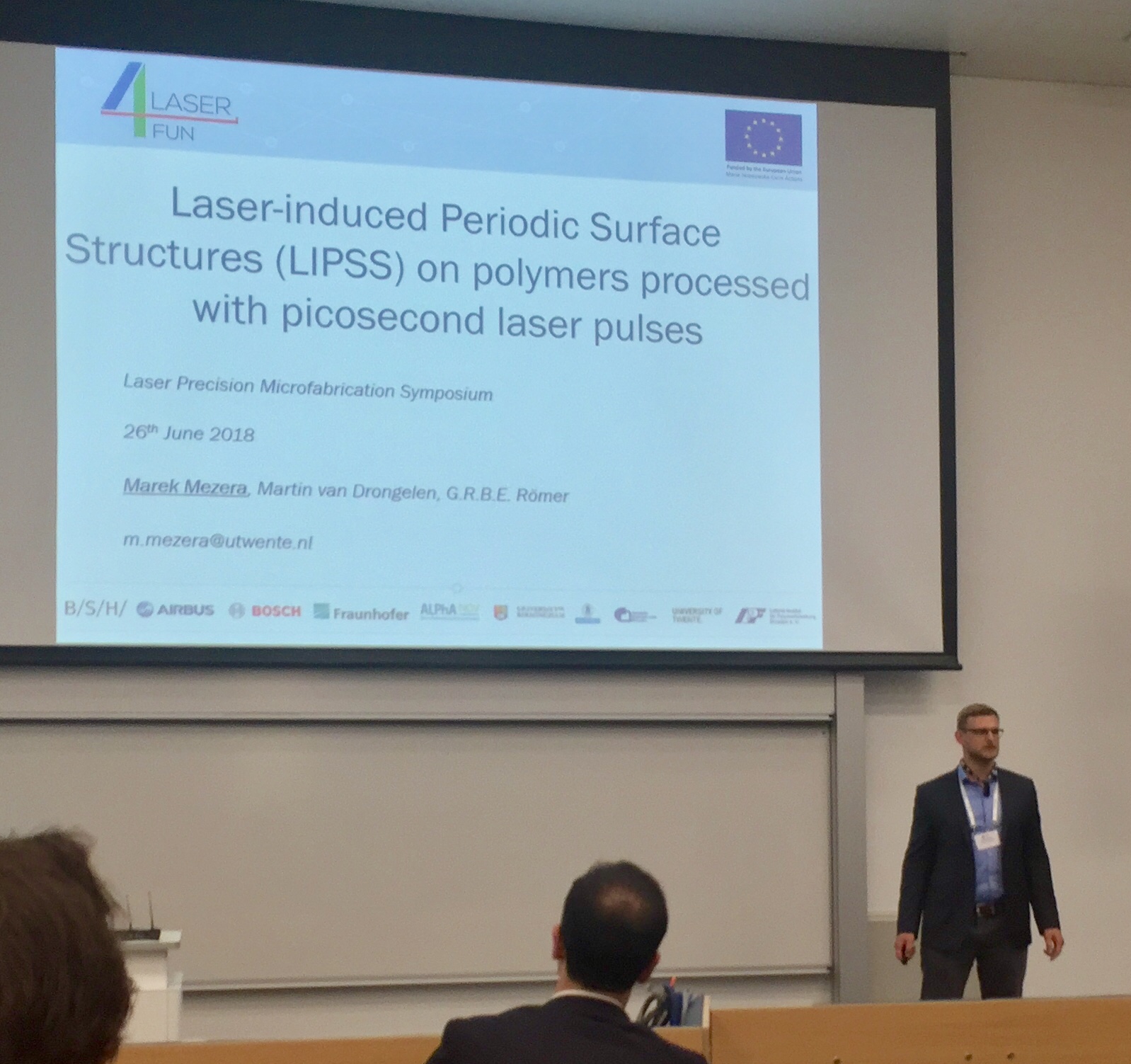
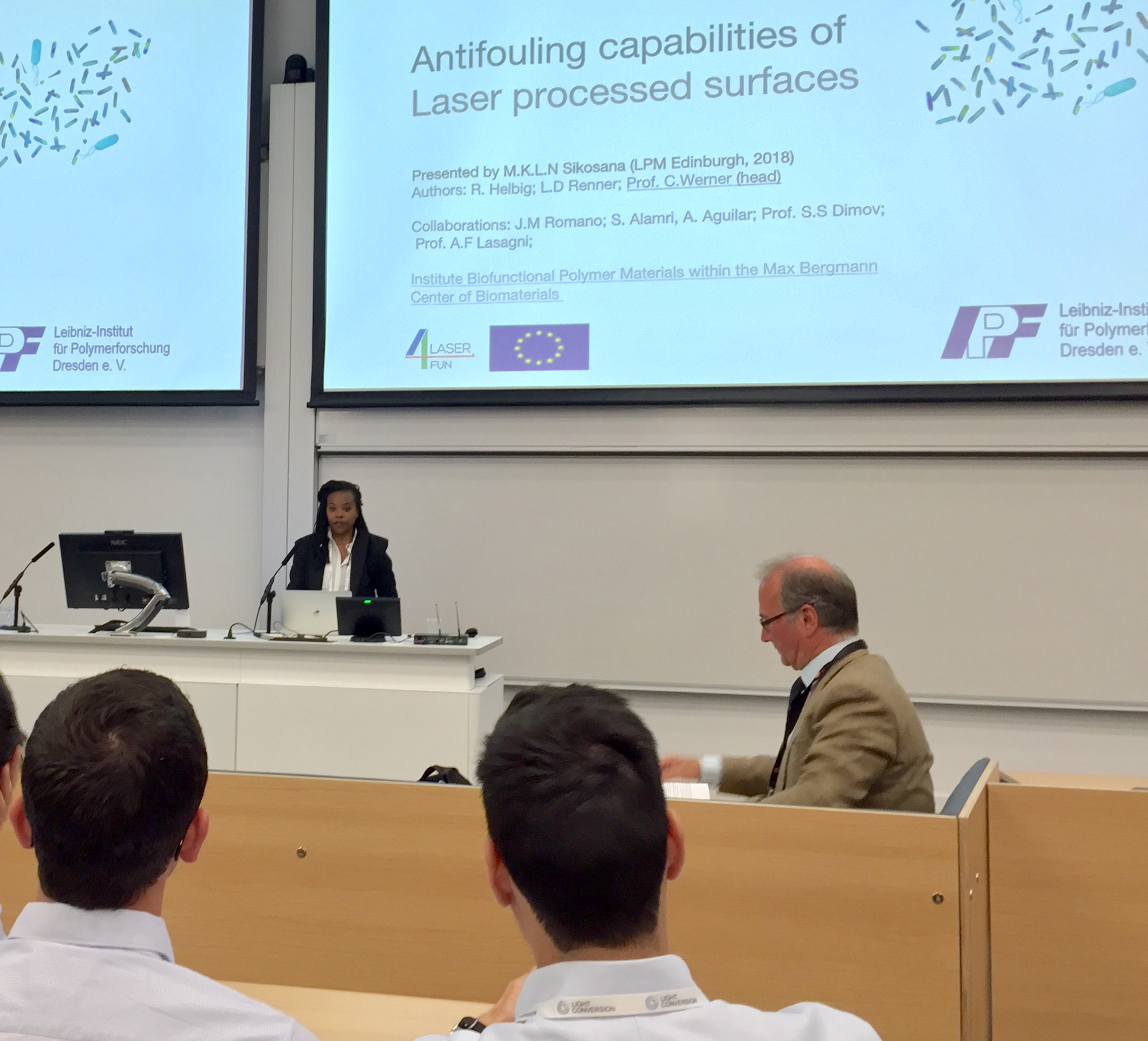
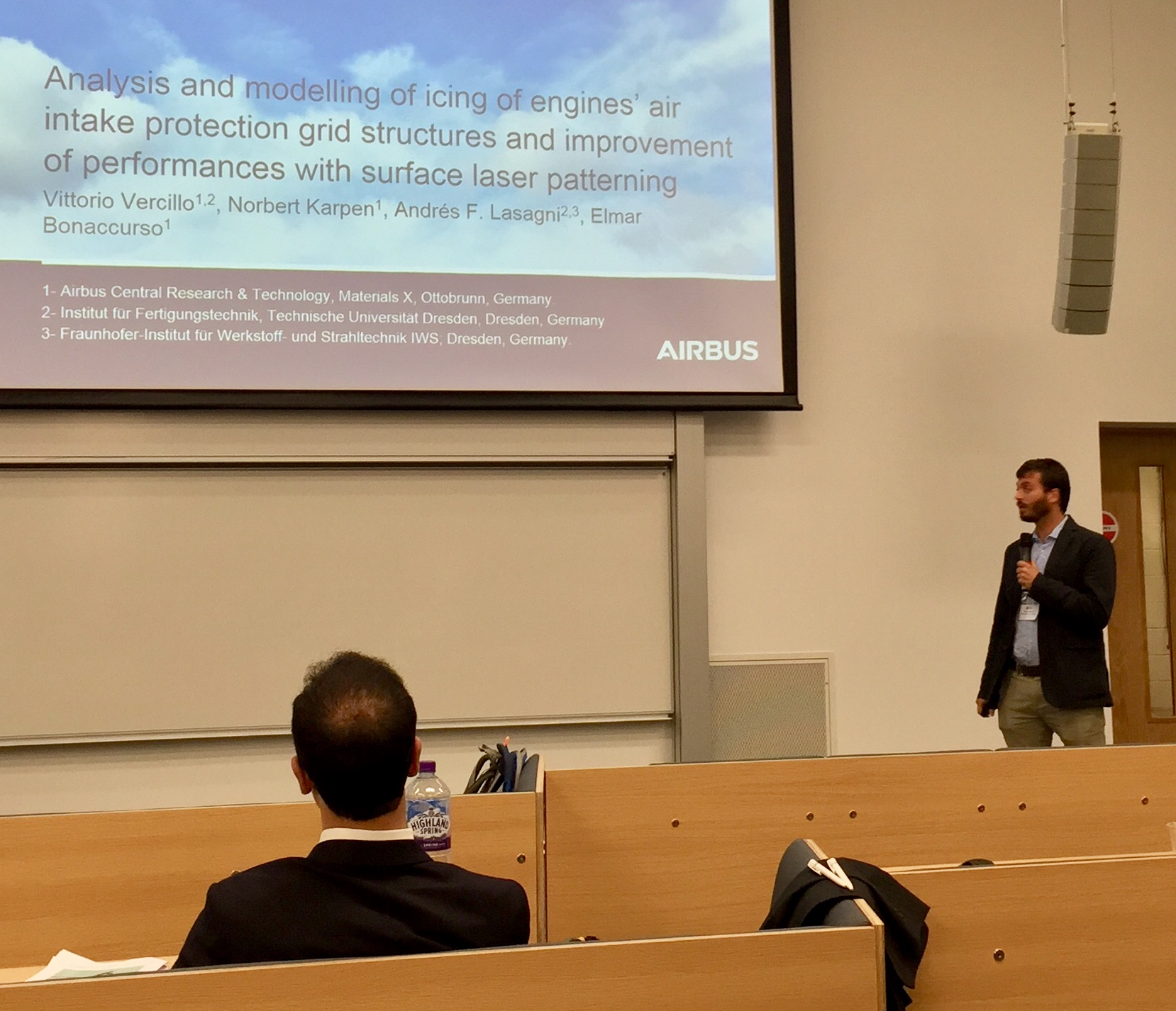
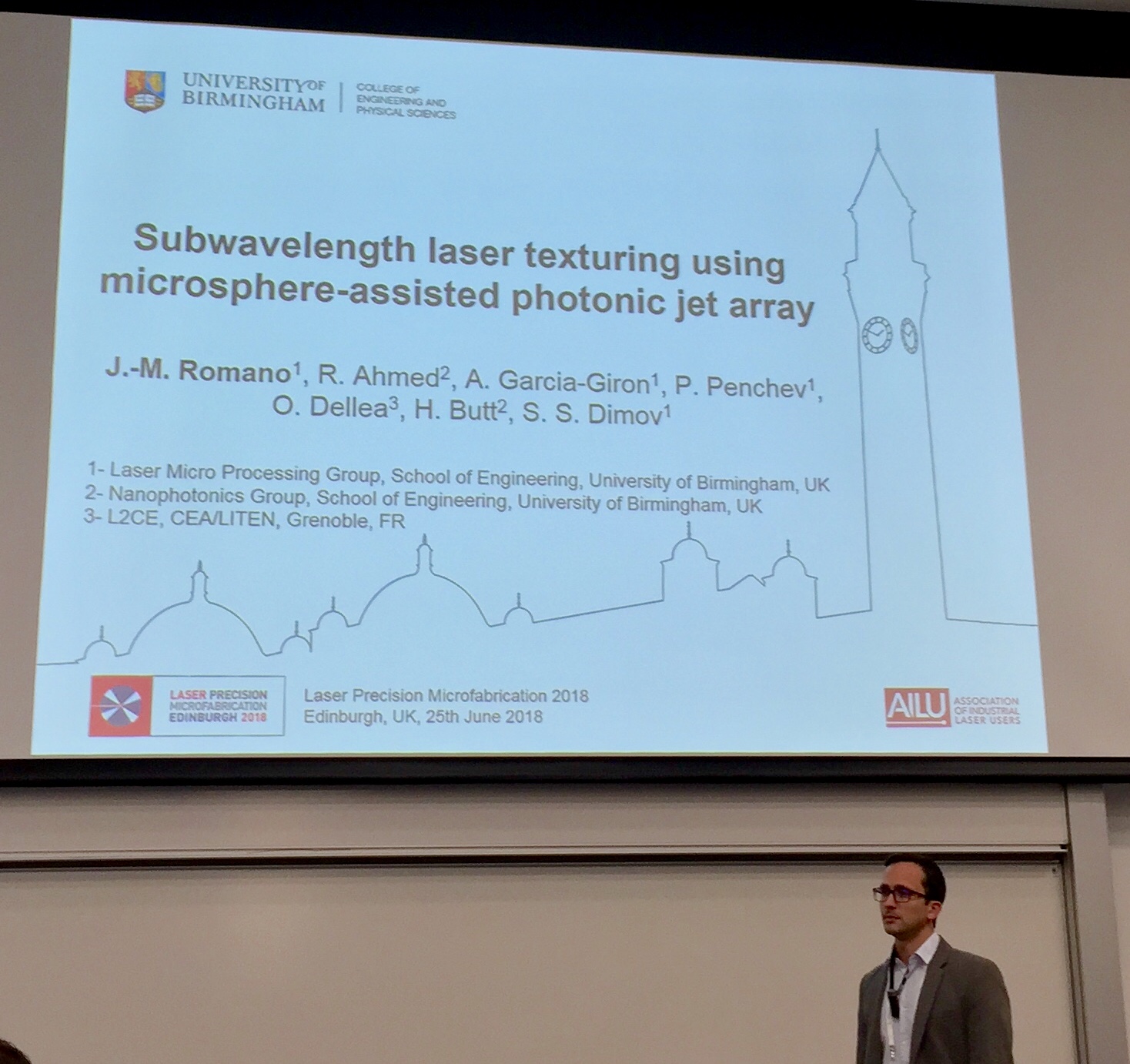
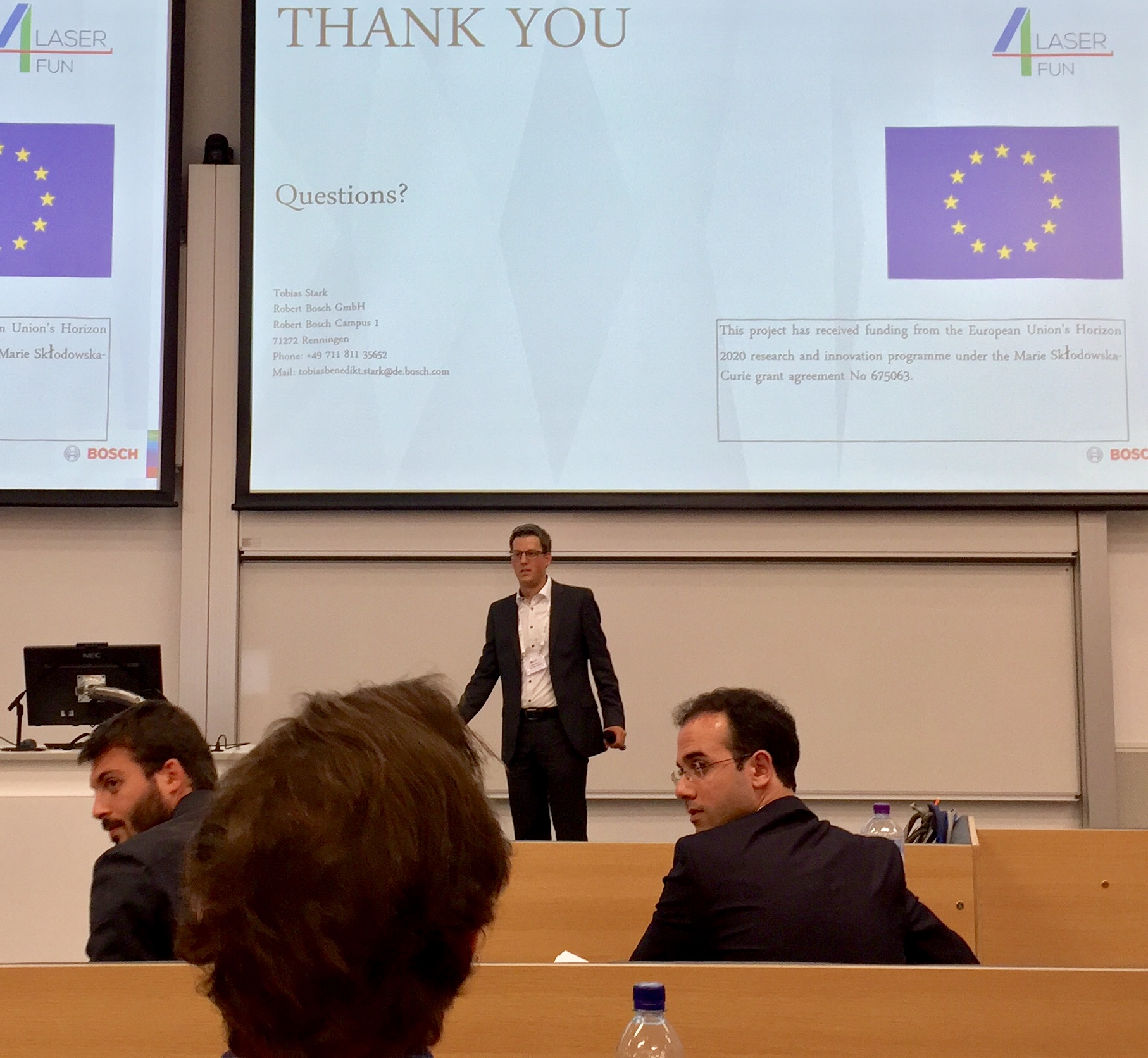
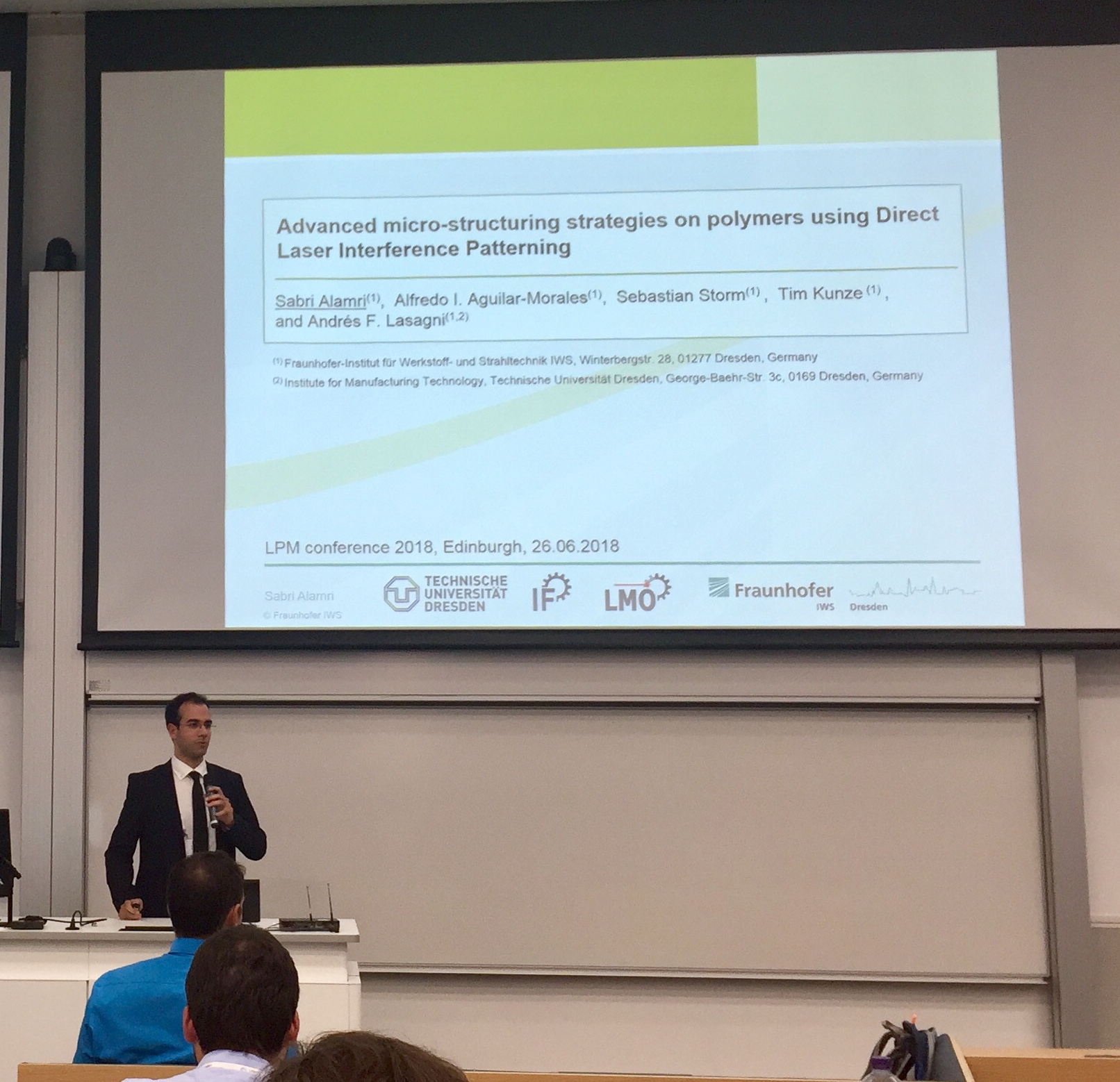
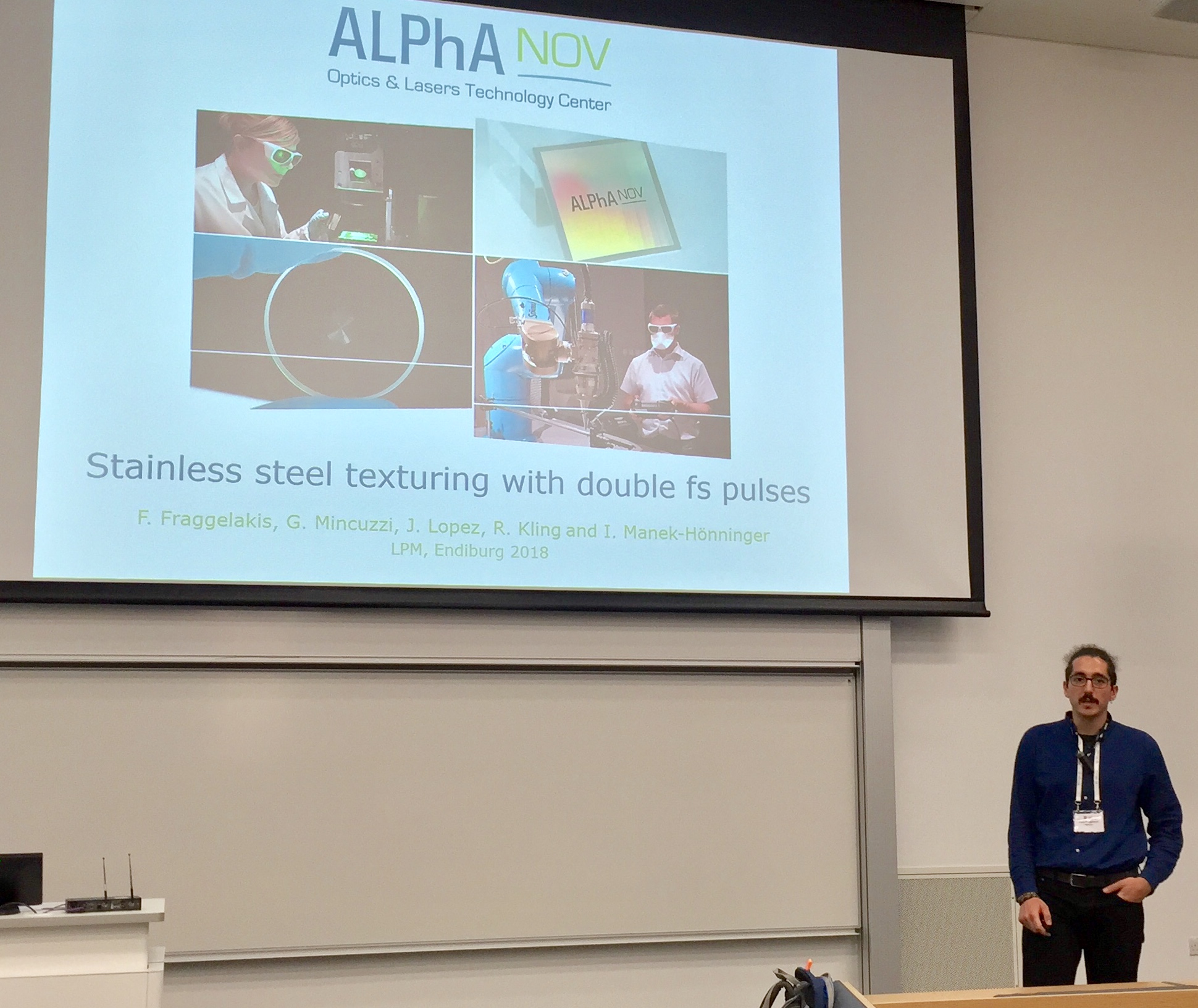
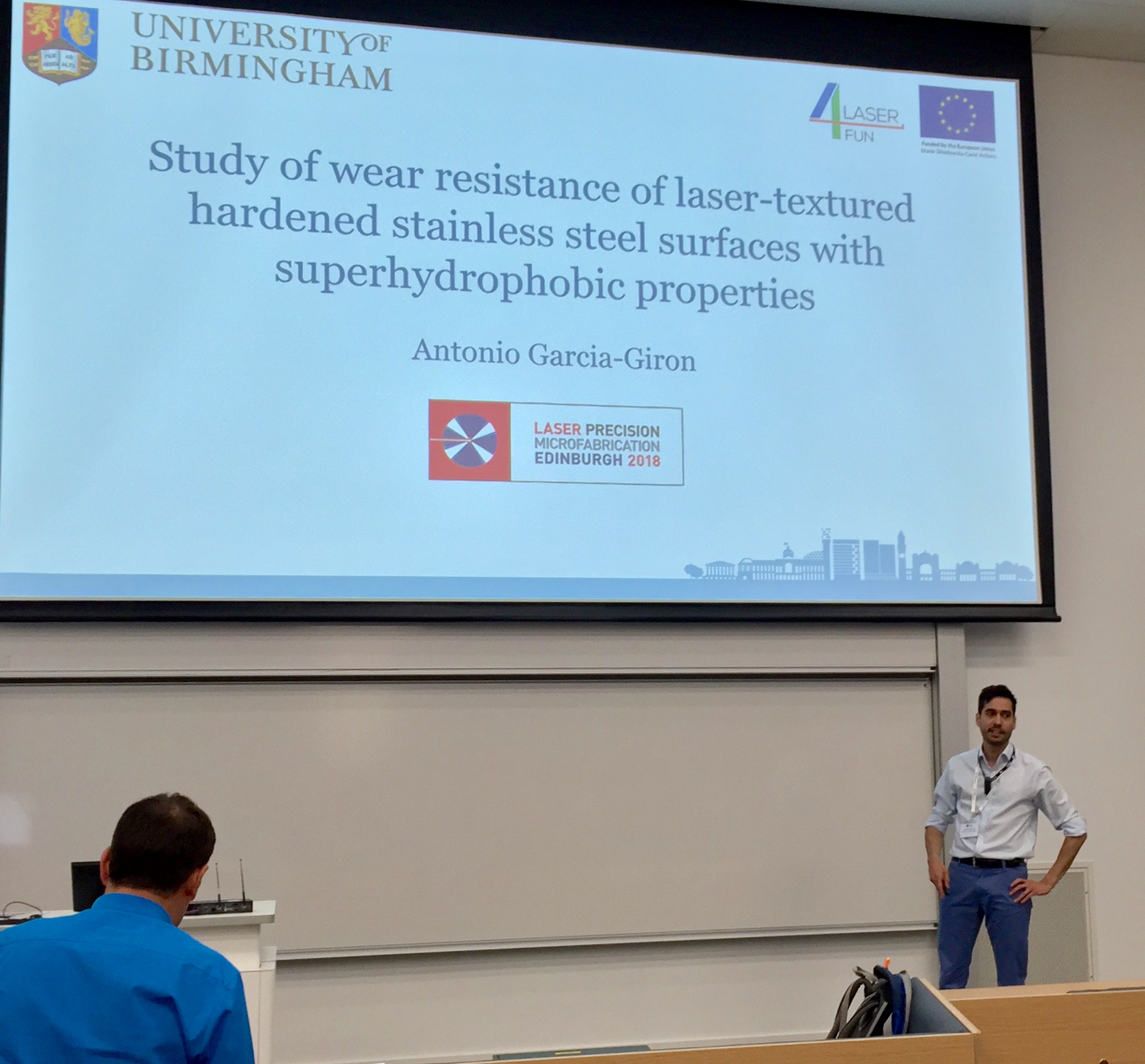
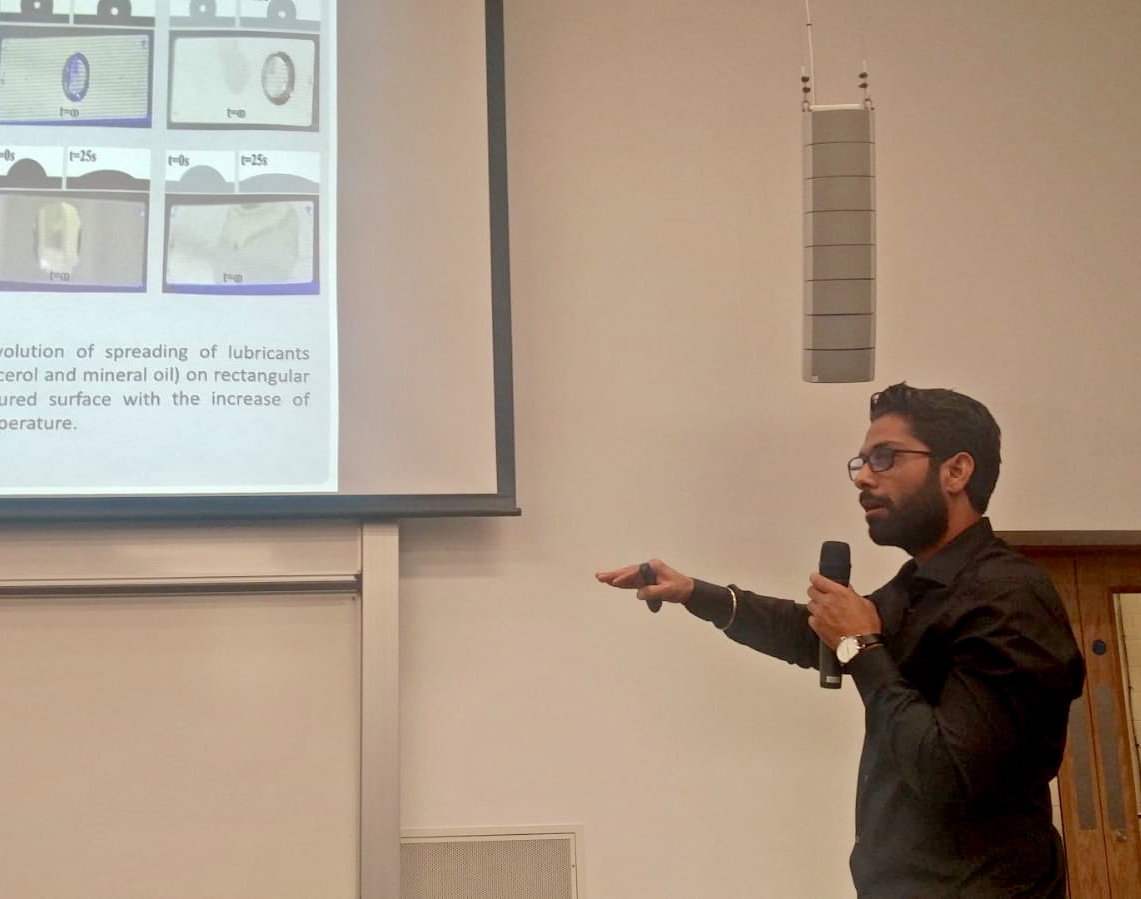
Luigi Capuano and Marek Mezera attended the Photonics Event in The Netherlands
On June 19th ESRs Luigi Capuano and Marek Mezera attended the Photonics Event 2018 in Enschede, The Netherlands, see https://photonics-event.nl/home-eng/. This event is the annual meeting point for the photonics community in the Benelux and Germany. At this event researchers, developers, designers and engineers working in the application and development of photonics meet to discuss the latest trends and developments. For companies from end markets such as Agriculture, Food, Healthcare, Lifescience or the High-tech Systems sector, it is a good opportunity to get acquainted with the technology and the companies that can support development.
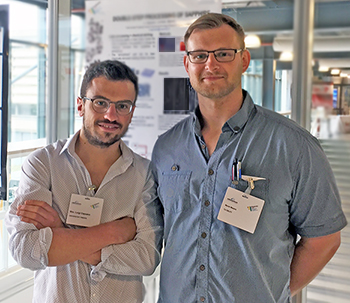
Influence of processing parameters on surface texture homogeneity using Direct Laser Interference Patterning
Results of the work in the Laser4Fun project has been published as:
Alfredo I. Aguilar-Morales, Sabri Alamri, Tim Kunze, Andrés Fabián Lasagni. Influence of processing parameters on surface texture homogeneity using Direct Laser Interference Patterning. Optics & Laser Technology. Volume 107, November 2018, Pages 216–227.
Abstract
Surface functionalities in the field of tribology, wettability, biocompatibility and holographic marking introduced by well-defined surface structures strongly depend on the surface texture homogeneity and quality. This work presents strategies for the fabrication of homogeneous periodic surface microstructures employing the Direct Laser Interference Patterning (DLIP) technology with the fundamental transverse mode (TEM00) emitted from a nanosecond laser source. Ti6Al4V substrates are structured using line-like patterns with spatial periods of 7.20 µm, 5.82 µm and 4.31 µm. The impact of various DLIP process parameters such as laser fluence, pulse overlap, hatch distance and spatial period on the produced surface microstructures is introduced and the consequences on the surface texture homogeneity are discussed. Large-area analysis of micro structures is carried out through white light interferometry and scanning electron microscopy. A quantitative measurement scheme of the pattern homogeneity, based on topographical properties such as kurtosis, standard deviation and mean structure height was introduced. Furthermore, the influence of a second modulation arising from the employed hatch distance has been identified. A quantitative parameter, the surface error percentage, has been introduced and employed for the characterization of pattern homogeneity. It was found that specially for larger spatial periods and surfaces treated at high laser fluence, pulse-to-pulse overlaps and a short hatch distance, the overall surface texture homogeneity could be improved up to ∼80–90%.
Link(s)
Airbus Group innovation in Futuris
Airbus Group innovation, an industrial partner of the Laser4Fun project, was interviewed in the TV programme Futuris from euronews. The team of Elmar Bonaccurso and Vittorio Vercillo (an ESR in the project) highlighted that the environmental-friendly manufacturing and durability of engineered surfaces with superhydrophobicity and anti-icing properties are at the centre of the preoccupation of the aerospace industry. By considering laser-texturing processes, the project Laser4Fun is offering an alternative to chemical coating of aircraft wings.
For a videoclip point your webbrowser to: http://www.euronews.com/2018/05/28/phobic2ice-an-alternative-to-chemically-de-icing-planes
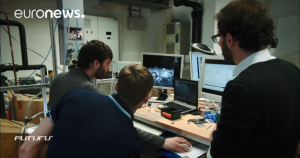
Generation of micro- and nano-morphologies on a stainless steel surface irradiated with 257 nm femtosecond laser pulses
Results of the work in the Laser4Fun project has been published as:
Fotis Fraggelakis, Girolamo Mincuzzi, Inka Manek-Hönninger, John Lopez and Rainer Kling(2018) Generation of micro- and nano-morphologies on a stainless steel surface irradiated with 257 nm femtosecond laser pulses. RSC Adv., 2018, 8, 16082-16087. DOI: 10.1039/C8RA01774C.
Abstract
Surface structuring by femtosecond lasers has emerged as an efficient tool to functionalize the surfaces of various solid materials. Laser induced periodic surface structures (LIPSS) can drastically impact the wetting, friction and optical properties of the surface depending on the size, aspect ratio and period of the structures. Morphological characteristics in the nanoscale, such as nano roughness, contributing to a hierarchical surface formation are considered to have a significant impact on those properties. In this study, we demonstrate for the first time to our knowledge the feasibility of inducing ripples and spikes utilizing a 257 nm femtosecond laser. LIPSS with a period smaller than 200 nm were realised. Furthermore, we show the evolution of those structures into conical spikes for this wavelength, and we provide an interpretation on their formation. Finally, we show that sub 200 nm LIPSS can create subwavelength gratings providing non-angular dependent light reflection and non-periodic morphologies showing super hydrophobic behaviour.
Link(s)
Triangular laser-induced submicron textures for functionalising stainless steel surfaces
Results of the work in the Laser4Fun project has been published as:
Jean-Michel Romano, Antonio Garcia-Giron, Pavel Penchev, Stefan Dimov (2018) Triangular laser-induced submicron textures for functionalising stainless steel surfaces. Applied Surface Science
Volume 440, 15 May 2018, Pages 162–169.
Abstract
Processing technologies that engineer surfaces with sub-micron topographies are of a growing interest to a range of optical, hydrophobic and microbiological applications. One of the promising technologies for creating such topographies employs ultra-short laser pulses to produce laser-induced periodic surface structures (LIPSS) that often result in non-regular, quasi-periodic nanoripples and nanopillars. In this research near infrared ultra-short pulses of 310 fs with a circular polarisation was used to texture ferritic stainless steel workpieces. A single-step process was designed to generate low spatial frequency LIPSS (LSFL) over relatively large areas. Apart from highly regular and homogeneous parallel lines with approximately 900 nm periodicity, extraordinarily uniform triangular-LSFL in hexagonal arrangements was created. The generation of such LSFL was found to be highly repeatable but very sensitive to the used laser processing settings. Therefore, the sensitivity of triangular-LSFL formation to the used laser processing settings, i.e. pulse to pulse distance, pulse fluence and focal plane offsets, were investigated in regard to the resulting morphologies and functional properties, i.e. structural colors and super-hydrophobicity. Finally, the capability of this technology for producing uniform triangular-shaped LSFL on relatively large surface areas of stainless steel plates was studied.
Link(s)
Many contributions from Laser4Fun to 10th International Laser Symposium & International Symposium “Tailored Joining” in Dresden
The 10th International Laser Symposium & International Symposium »Tailored Joining« on February 27 & 28, 2018 was organised by the Fraunhofer IWS at the International Congress Center in Dresden, Germany. Because in the “manufacturing of the future” the digitalization of laser material processing is becoming increasingly important, the motto of the symposium was “Industry 4.0”.
During the “laser-micromachining” sessions, delegates from the Laser4Fun-consortium presented the latest results from the Laser4Fun project:
- Gert-Willem Römer (University of Twente, The Netherlands): Laser-induced Periodic Surface Structures (LIPPS), fundamentals and applications,
- Antonio Ancona (CNR-IFN, Italy / University West, Sweden): Ultrafast laser surface micro-texturing to tailor lubricated friction of steel,
- José Luis Ocana (UPM Laser Centre, Universidad Politécnica de Madrid, Spain): Direct generation of superhydrophobic microstructures in metals by UV laser sources in the nanosecond regime,
- Rainer Kling (ALPHANOV, France) Functionalization of technical surfaces with ultra-short pulsed lasers,
- And 2 posters by Sabri Alamri and Alfredo Aguilar Morales.
Last, but not least, the Laser4Fun-delegates joined in a fruitful panel discussion about the future of laser-micromachining, together with other presenters of the micromachining session.
